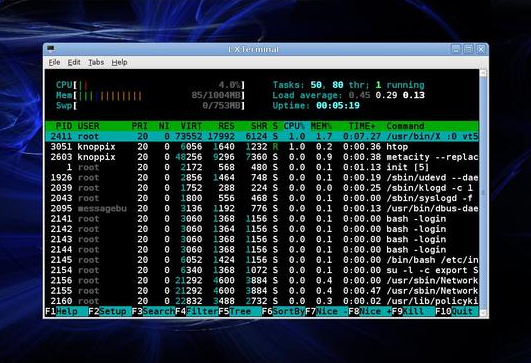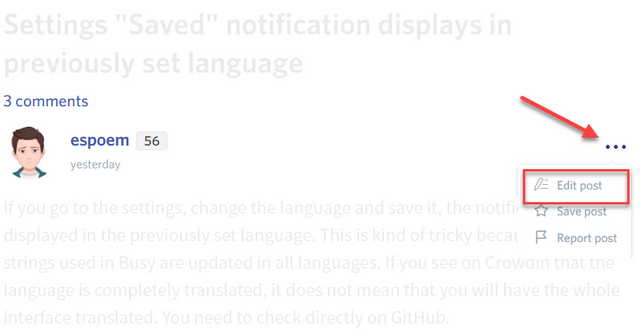Fancy experimenting with Linux but don't want the bother of installing a new OS? I have the answer: try a live distribution. As a brief aside from the tutorials I've been running, today and next we'll be covering the concept of booting Linux directly from CD, as well as looking at some Linux distros designed for very specific needs. A distro aimed at kids is one example we'll cover next month.
So you want to play with Linux for one reason or another, but you don't want to spend time installing it to hard disk, only to realise it isn't for you after all? Today, I have just the thing for you.

What you need is a 'live distribution'. Check the boxout on the bottom of this page for more on what a live distribution actually is, but the basic idea is this: a full operating system which boots from a removable, non-rewritable disc such as CD or DVD. Many live distros are large enough to require a full 4GB DVD, but quite a few will happily nestle on a single 700MB CD. For that matter, distributions exist which will boot from removable USB keyring drives, and some can even live on the venerable old floppy disk.
Knoppix
Of all the live distros available, the one you're most likely to have heard of is Knoppix. Knoppix is very swish and professional, and fits an astounding amount onto a single CD – automatic hardware detection for many video and soundcards as well as a good range of USB and SCSI devices, for example. Thanks to some powerful on-the-fly decompression routines, Knoppix also manages to cram almost half the content of a DVD onto a working live CD.

According to the Knoppix website (http://knoppix.net/), you can use this distro as a demo to see whether Linux is for you or not, as an educational tool, or even as a rescue system for an existing Linux installation. I think this undersells Knoppix somewhat, and we know quite a few people who carry a Knoppix CD around in their laptop cases for the occasions when Windows just won't do the job. One professional networking guru happily uses his to configure routers and other hardware much more quickly than the Windows installation on his laptop. The point here is that Knoppix is very flexible, and an excellent all-round introduction to the idea of a live Linux distribution. You don't need hefty hardware to use Knoppix, either. Any processor will do for the most basic console mode, and as little as 1GB RAM will suffice. For the graphical mode using KDE, you'll need between 96 and 128MB, depending on whether you want to use programs like OpenOffice or not. Other than that, you simply need a bootable CD drive or a boot floppy to load it up.
If you're already a Linux user who works with the KDE environment, you might be curious about GNOME. In this case, a variation on Knoppix (known as Gnoppix) is worth a look. Essentially, it's like Knoppix but with the GNOME graphical environment rather than KDE. While it may work in a similar way to Knoppix, it's based around a project known as 'Ubuntu Linux', which is itself based around the Debian core. Gnoppix is an excellent starting point if you're new to live distros but don't get along with KDE.
Morphix is another variant on Knoppix, but aims to be a much more modular system. This means that different versions of Morphix are available according to what you want your live distro to do. For example, Morphix comes in Game, GNOME and KDE versions on different disc images, as well as a lighter graphical version which uses IceWM as the window manager. One thing we like about Morphix is the way it's positioned itself – it comes with a graphical disk partition manager and can install itself to hard drive as a 'real' Linux distro at a later date if you decide you want to get into it more seriously. Full marks for that neat idea.
Big names, too
Not all live distributions are based around obscure Linux variants, though. If you have any interest at all in Linux, you'll know about the excellent SUSE Linux, a distro we've featured many times over the years in PC Plus. Since version six, SUSE has also been available as a live distribution. SUSE was the first of the major Linux vendors to release a freely downloadable Live CD. Since SUSE is the only major distro you can't freely download in its entirety, the live CD is useful as a demo of the full version. Unlike most, SUSE Live requires a hard disk in order to run, though not much is installed at all. However much we love the full version, we can't recommend the Live CD as anything other than a demo, as it simply proves too restrictive when compared to the likes of Knoppix.
Some distributions can fit in an even smaller space, astonishingly enough. If you've ever seen those nifty square-shaped 'business card' CDs, you might have wondered how useful they really are. Here's your answer: the wonderfully-named Damn Small Linux fits onto one, requiring a paltry 48MB RAM! Designed by Californian John Andrews, Damn Small Linux is intended to be a simple, all-purpose Linux distro you can carry in your wallet alongside your credit cards, and it actually works really well.
While it can't compete with the likes of Knoppix as a 'serious' distro – nor is it meant to – it comes with a graphical environment along with lightweight tools for email, word processing and even playing music. We like Damn Small Linux. To paraphrase the credit card advert on TV: What's in your wallet? Linux is in ours!
As well as general purpose live distros, there are many specialised ones available, such as Linux for the visually impaired, Linux for kids and Linux for people who want to edit music and video, all from a single disc.
Live distributions explained
How to get Linux up and running on your system in minutes.
If you're coming from the wonderful world of Windows, I'll forgive you for assuming that any operating system not only needs to be installed directly to hard disk to work, but requires acres of disk space. Neither assumption is true, and many variants of Linux can run directly from CD or DVD without requiring much (if any) disk space at all.
Central to the concept of booting an OS straight from non-writable media like CD is the term 'live distribution'. We need to explain the differences between a so-called live disc and a standard bootable CD. We've all used bootable CDs – Windows itself arrives on one. A bootable CD is designed as an aid to getting a full OS installed on your PC, and is something you use once then put away. By contrast, a live disc is one which boots your PC into a complete operating system that's not only fully functional but perfectly usable, too – and all without the inconvenience of installing to hard drive.
Linux has pioneered the concept of live distros. They're great for distribution vendors as they enable you to see what a particular flavour of Linux is like without committing to a full install. Simply insert the disc, switch on and experience a particular distro without affecting your existing OS, whether that be Windows or another Linux distro.
Live discs are more than just glorified demos, though – they can have a very useful purpose for everyday use. To begin with, we don't all have the time to commit to what is after all quite a hefty job – installing a full OS. Live discs are ideal here – you can simply pop a disc in, reboot and tinker with Linux as and when you like. If a particular distro doesn't suit your needs, erase the rewritable disc and burn a new one.
Posted on Utopian.io - Rewarding Open Source Contributors
Your contribution cannot be approved yet because it is not as informative as other contributions. See the Utopian Rules. Please edit your contribution and add try to improve the length and detail of your contribution (or add more images/mockups/screenshots), to reapply for approval.
You may edit your post here, as shown below:

You can contact us on Discord.
[utopian-moderator]
Downvoting a post can decrease pending rewards and make it less visible. Common reasons:
Submit
The contribution were updated to provide more detailed information.
Downvoting a post can decrease pending rewards and make it less visible. Common reasons:
Submit
Your contribution cannot be approved because it does not follow the Utopian Rules.
The contribution must provide a step by step guide for a particular task which should be supplemented by images/screenshots. The present contribution is of a very general nature and cannot be accepted.
You can contact us on Discord.
[utopian-moderator]
Downvoting a post can decrease pending rewards and make it less visible. Common reasons:
Submit